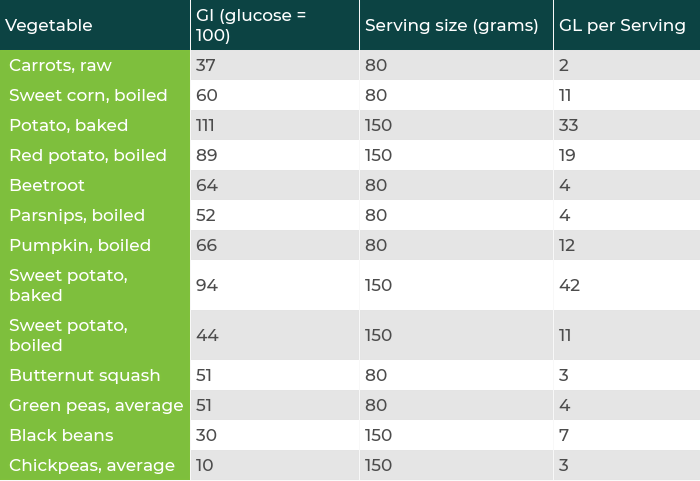Gluten-Free and Low GI Foods: What to Know

Key Takeways
Gluten refers to a type of protein found in wheat, barley, and rye - it’s an essential part of the recipe to form the structure of many baked goods such as breads and pizzas. In recent years, rates of Celiac Disease (CD) have been rising. CD is caused by an immune reaction against these proteins and can produce a wide range of symptoms like bloating and constipation, or worse.
Many people are also finding they are simply gluten sensitive or have some of the symptoms of CD but without the whole picture and changes to their gut. While this can be a relief to some, the result is the same - gluten is to be avoided if they want a regular and pleasant eating experience. Finally, some people choose to avoid gluten as a lifestyle choice, either because they live with someone with CD or gluten sensitivity or simply feel better eating a gluten-free diet.
If you fall into any of these categories, your first impression might be to reach for a “gluten-free” option like gluten-free bread or gluten-free beer, which are simply made with the wheat or barley proteins removed during preparation. We’re here to tell you there are a whole range of great options for people avoiding gluten for any reason, and that won’t drive your blood glucose levels to unhealthy values at the same time. The primary way to measure the effect on blood glucose levels for a specific food is the Glycemic Index (GI).
Gluten-Free Foods and the Glycemic Index
The Glycemic Index is a simple number with an interesting calculation that we won’t bore you with here. Basically, the higher the GI, the closer to pure sugar it is for your body to digest and the stronger the effect on your blood glucose levels. Foods with lower GI are conversely going to be helpful to maintain a lower and healthier range after eating them compared to other high GI options.
If you’re also trying to avoid eating gluten, the good news is that many of these foods are suitable for both priorities. Often, if a food has a low GI, it doesn’t have a lot of starch in it either, so it will most likely not have the grains that naturally contain gluten at all.
A GI of below 55 is considered low as a rule of thumb, and a GI of above 70 is deemed high. Those that fall in between are considered moderate. A few things are worth keeping in mind when looking at a food’s GI, however. If it’s a starchy baked food, you’re probably fine taking the GI at its face value.
But if you’re looking at a fruit or a vegetable, these are typically “born” with a lot of starch and less sugar, but as they ripen or “age,” this becomes broken down into sugars that are more rapidly digested by our bodies. In other words, the fruit or vegetable does the work of digestion for us, which means faster and sharper blood sugar spikes.

Things That Can Change The GI of Gluten-Free Foods
Similarly, if a food is highly processed, it’s a good bet that the GI is probably higher since the extraction of sugars and nutrients from a whole food tends to shorten the digestion time for us. Fermentation, if you can believe it, causes foods to be more slowly digested. So if you have some kimchi lying around now, you know one extra reason it’s considered a healthy food.
By now, you may be thinking, what about that gluten-free beer you mentioned - that’s fermented, so it must be fine. Unfortunately, in that case, glucose is fermented into ethanol, which is nutrition-less but has several harmful short and long-term effects on health.
The fiber content of a food can also affect its overall GI. Fibers come in two varieties - soluble and insoluble. Soluble fiber is found in oats and legumes, and is soluble in water which creates a gel-like substance that can help to lower glucose and cholesterol values. Finding a low GI food is a good thing - and both oats and legumes have the added benefit of being naturally gluten-free.
However, you should be careful with oats because they are often processed in the same facilities that process unfiltered wheat, so that some residual gluten may be present in the oats. Insoluble fiber is another story, mostly about regularity, but it doesn’t affect GI, which measures the initial response in blood glucose levels after eating a certain food.
Of course, it is very rare to eat a single food in isolation. Most foods are eaten as ingredients in a recipe or prepared food item like a hamburger or bowl of soup. A mixture of carbohydrates, proteins, and fats can help keep your blood glucose levels in a healthy range, as the combined digestion takes longer than eating the carbohydrates alone. Today there is a wide selection of gluten-free options containing these other nutrient groups, so it is easier than ever to keep a healthy and balanced diet that suits your needs.

High and Low GI Gluten-Free Foods
Moderate/High GI
- Gluten-Free Bread
- Gluten-Free Pizza
- Watermelon
- Pineapple
- Pumpkin
- Mango
- Potato
Low GI
- Oats (produced separately)
- Strawberries
- Grapefruit
- Legumes
- Broccoli
- Orange
Find the right Nutrisense programto turn insight into progress.
Go Beyond Glucose Data with Nutrisense
Your glucose can significantly impact how your body feels and functions. That’s why stable levels are an important factor in supporting overall wellbeing. But viewing glucose isn't enough. Nutrisense, you’ll be able to learn how to use your body's data to make informed lifestyle choices that support healthy living.
One-to-one coaching
Sign up to access insurance-covered video calls to work with a glucose expert: a personal registered dietitian or certified nutritionist who will help tailor your lifestyle and diet to your goals.
Monitor and measure what matters
With the Nutrisense CGM Program, you can monitor your glucose with health tech like glucose biosensors and continuous glucose monitor (CGM)s, and analyze the trends over time with the Nutrisense App. This will help you make the most informed choices about the foods you consume and their impact on your health.
Find your best fit
Ready to take the first step? Start with our quiz to find the right Nutrisense program to help you take control.

Kara Collier is a registered dietitian nutritionist and certified nutrition support clinician who is passionate about reshaping how we approach prevention, behavior change, and metabolic health. A Forbes 30 Under 30 honoree, she’s helped over 150,000 people improve their metabolic health using tools like continuous glucose monitors and behavior-focused nutrition strategies. Kara has been featured by Forbes, UC Berkeley, and HLTH, and has appeared on top podcasts like Mind Pump and The Genius Life.




